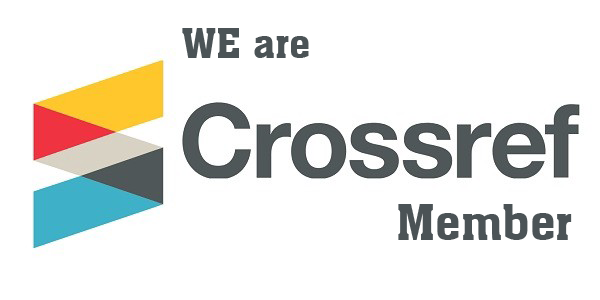Antimicrobial and Antioxidant Activities and Phytochemical Profiling of Crude Extracts from Senna alexandrina
DOI:
https://doi.org/10.54172/tdg2b571Keywords:
Senna Alexandrina, Antimicrobial Activity, Antioxidant Activity, Total PhenolicsAbstract
This study aimed to evaluate the biological activities and chemical characterization of crude extracts from Senna alexandrina. The plant extracts were prepared by sequential maceration of dried leaf powder using solvents of increasing polarity. Their antimicrobial activity was tested against two Gram-positive bacteria (Bacillus subtilis and Staphylococcus aureus), two Gram-negative bacteria (Escherichia coli and Pseudomonas aeruginosa), and two fungi (Candida albicans and Aspergillus niger) utilizing the disc diffusion method. Antioxidant activity was measured by evaluating the scavenging of the stable 2,2-diphenyl-1-picrylhydrazyl free radical. Chemical characteristics such as total polyphenolic, flavonoid, and tannin contents were determined through spectrophotometric assays. Overall, the extracts showed stronger antifungal than antibacterial properties. Methanol and n-hexane extracts demonstrated significant antifungal activity with zones of inhibition measuring 25mm for C. albicans and 18mm for A. niger, respectively. The methanolic extract showed the highest antibacterial activity against E. coli with a 13mm zone of inhibition. It also exhibited the highest scavenging radical activity at 56%. Total polyphenolics were predominantly found in the ethyl acetate extract, reaching 136.8 ± 0.03 mg gallic acid equivalent per gram. Flavonoids were most abundant in the ethyl acetate extract with 499.33 mg quercetin equivalent per gram. Except for the methanolic extract of S. alexandrina, all extracts lacked tannins. In conclusion, this plant has potential as a valuable source of natural bioactive compounds.
References
Ahmad AR, Malik A, Handayani S, Zulkarnain I, Amliati, Lailatulqadri N, Mamas M.(2024a) Antioxidant Activity of Senna (Senna alexandrina MILL.) Leaf Extracts. Pharmacogn J.16(6): 1355-1358.
Ahmed Ali Mustafa , Mubarak Siddig Hamad, Haifa A. A. Omer and Afaf R. Taher. (2024b). Evaluation of Antimicrobial, Antioxidant Activities and Total Phenolic Contents of Corchorus tridens., Crude Extracts. Volume 1, Issue 2. P: 49-53.
Ahmed, F., & Rahman, M. S. (2016). Preliminary assessment of free radical scavenging, thrombolytic and membrane stabilizing capabilities of organic fractions of Callistemon citrinus (Curtis.) Skeels leaves. BMC complementary and alternative medicine, 16, 1-8.
Ahmed, S. M. Ahmad, B.L. Swami, S. Ikram (2016), A review on plants extract mediated synthesis of silver nanoparticles for antimicrobial applications: a green expertise J. Adv. Res., 7 (1) pp. 17-2.
Akloul R, Benkaci-Ali F, Zerrouki M and Eppe G: (2014). Composition and biological activities of the essential oil of Nigella sativa seeds isolated by accelerated microwave steam distillation with cryogenic grinding. University of Sciences and Technologies Houari Boumediène, American Journal of Essential Oils and Natural Products; 1: 23- 33.
El-Morsy. (2013).“Antibiotic Properties of LeafExtracts of Senna alexandrina (L)”. J Am Sci 9(1):288292]. (ISSN: 1545-1003.
Feudjio, C., Yameen, M. A., Singor Njateng, G. S., Khan, M. A., Lacmata Tamekou, S., Simo Mpetga, J. D., & Kuiate, J. R. (2020). The Influence of Solvent, Host, and Phenological Stage on the Yield, Chemical Composition, and Antidiabetic and Antioxidant Properties of Phragmanthera capitata (Sprengel) S. Balle. Evidence-Based Complementary and Alternative Medicine, 1-16.
Khurm M. Wang X., Zhang H., Hussain S.N., Qaisar M.N., Hayat K., Saqib F., Zhang X., Zhan G. and Guo Z (2020). The genus Cassia L.:Ethnopharmacological and phytochemicaloverview. PhytotherapyResearch 35: 1–50
Kobus-Cisowska J. Szczepaniak O.Szymanowska-Powałowska D. Piechocka J. Szulc P. Dziedziński M.(2019). Antioxidant potential of various solvent extract from Morus alba fruits and its major polyphenols composition. Ciência Rural. 50.
Morris, J. B. (2009). Characterization of medicinal Senna genetic resources. Plant Genetic Resources, 7(3), 257-259.
NPGS. 2008. The National Plant Germplasm System. http://www.ars-grin.gov/npgs/ (accessed 20 Oct. 2008).
Omer, H. A., Mustafa, A. A., Kabbashi, A. S., & Taher, A. R. (2024). Antimicrobial, Antioxidant Activities and total phenolics contents of Portulaca oleracea., crude extracts, Sudan. Research in Pharmacy and Health Sciences, 10(1), 225-229.
Ordonez A., Gomez J. and Vattuone M. (2006). Antioxidant activities of Sechium edule (Jacq.) Swartz extracts. Food Chemistry 97: 452–458.
Roy M. and Dutta T. K. (2021). Evaluation of phytochemicals and bioactive properties in Mangrove Associate Suaedamonoica Forssk.ex JF Gmel. of Indian Sundarbans. Frontiers in Pharmacology 12: 232.
Stalikas, C.D., (2007). Extraction, separation, and detection methods for phenolic acids and flavonoids. Journal of Separation Science 30, 3268-3295.
Sun J.S., Tsuang Y.H., Chen I.J., Huang W.C., Hang Y.S. and Lu F.J. (1998). An ultra weak chemiluminescence study on oxidative stress in rabbits following acute thermal injury. Burns 24: 225–231.
Sun J.S., Tsuang Y.H., Chen I.J., Huang W.C., Hang Y.S. and Lu F.J. (1998). An ultra weak chemiluminescence study on oxidative stress in rabbits following acute thermal injury. Burns 24: 225– 231.
Thouri A. Chahdoura HEL. Arem A. Hichri AO. Hassin RB. Achour L. Effect of solvents extraction on phytochemical components and biological activities of Tunisian date seeds (var. Korkobbi and Arechti). BMC Complementary and Alternative Medicine. 2017; 17(1): 1-10.
Vijaya SekharV E, Satya Prasad M, Suman Joshi D S D, NarendraK, KrishnaSatyaA, SambasivaRao K R S.( 2016). Assessment of Phytochemical Evaluation and In-vitro Antimicrobial Activity of Cassia angustifolia. International Journal of Pharmacognosy and Phytochemical Research. 8(2); 305312.
Viswanathan, S., & Nallamuthu, T. (2012). Phytochemical screening and antimicrobial activity of leaf extracts of Senna alexandrina Mill. against human pathogens. International Journal of Current Science, 2, 51-56.
Wibisono, Y., Fadila, C. R., Saiful, S., & Bilad, M. R. (2020). Facile approaches of polymeric face masks reuse and reinforcements for micro-aerosol droplets and viruses filtration: A review. Polymers, 12(11), 2516.
Wolfe K., Wu X. and Liu R.H. (2003). Antioxidant activity of apple peels. Journal of Agricultural and Food Chemistry 51: 609–614.
Downloads
Published
Issue
Section
License
Copyright (c) 2025 Ahmed Ali Mustafa (Author)

This work is licensed under a Creative Commons Attribution-NonCommercial 4.0 International License.
Copyright of the articles Published by Al-Mukhtar Journal of Basic Sciences (MJBS) is retained by the author(s), who grant MJBS a license to publish the article. Authors also grant any third party the right to use the article freely as long as its integrity is maintained and its original authors and cite MJSc as the original publisher. Also, they accept the article remains published by the MJBS website (except in the occasion of a retraction of the article).












